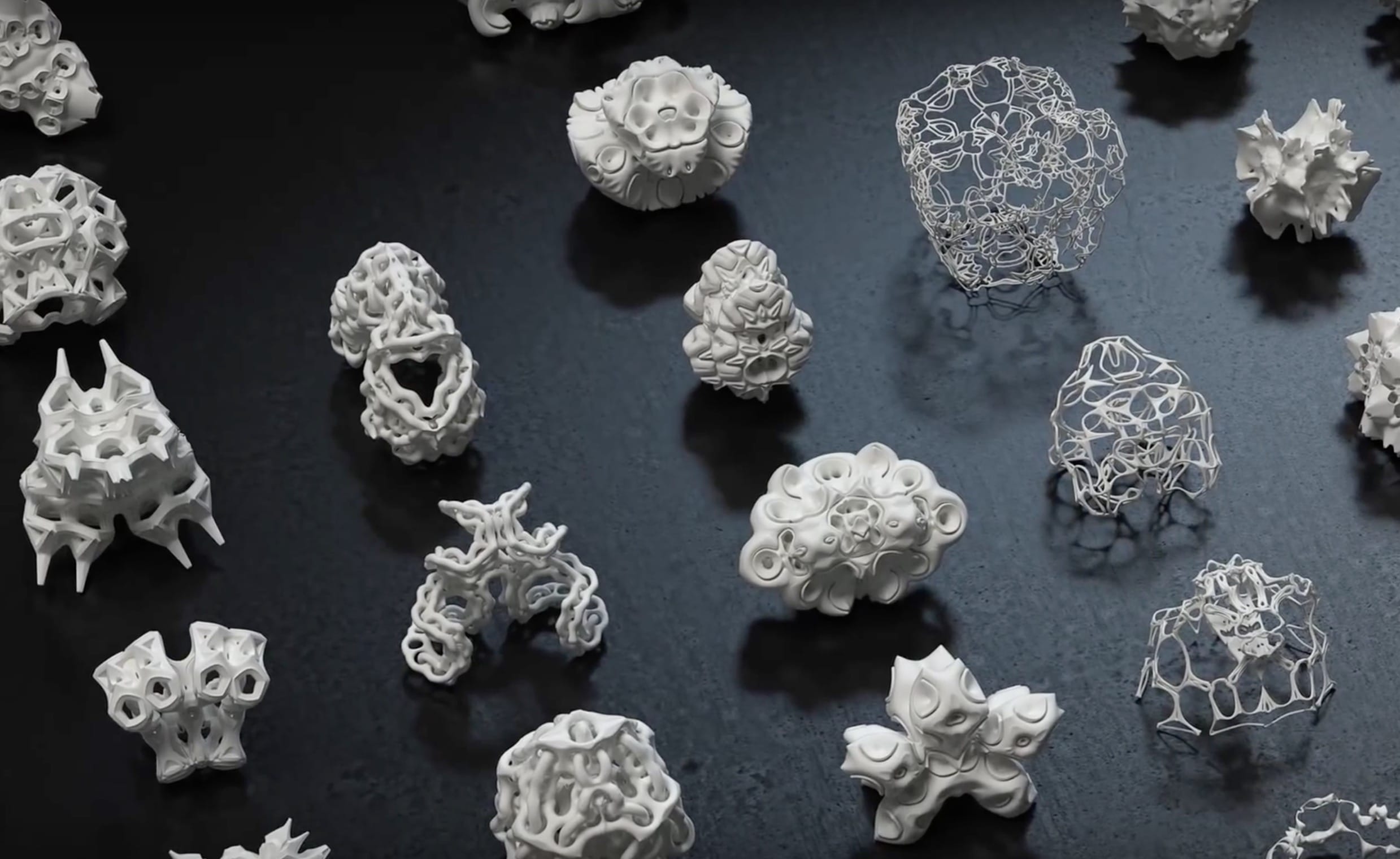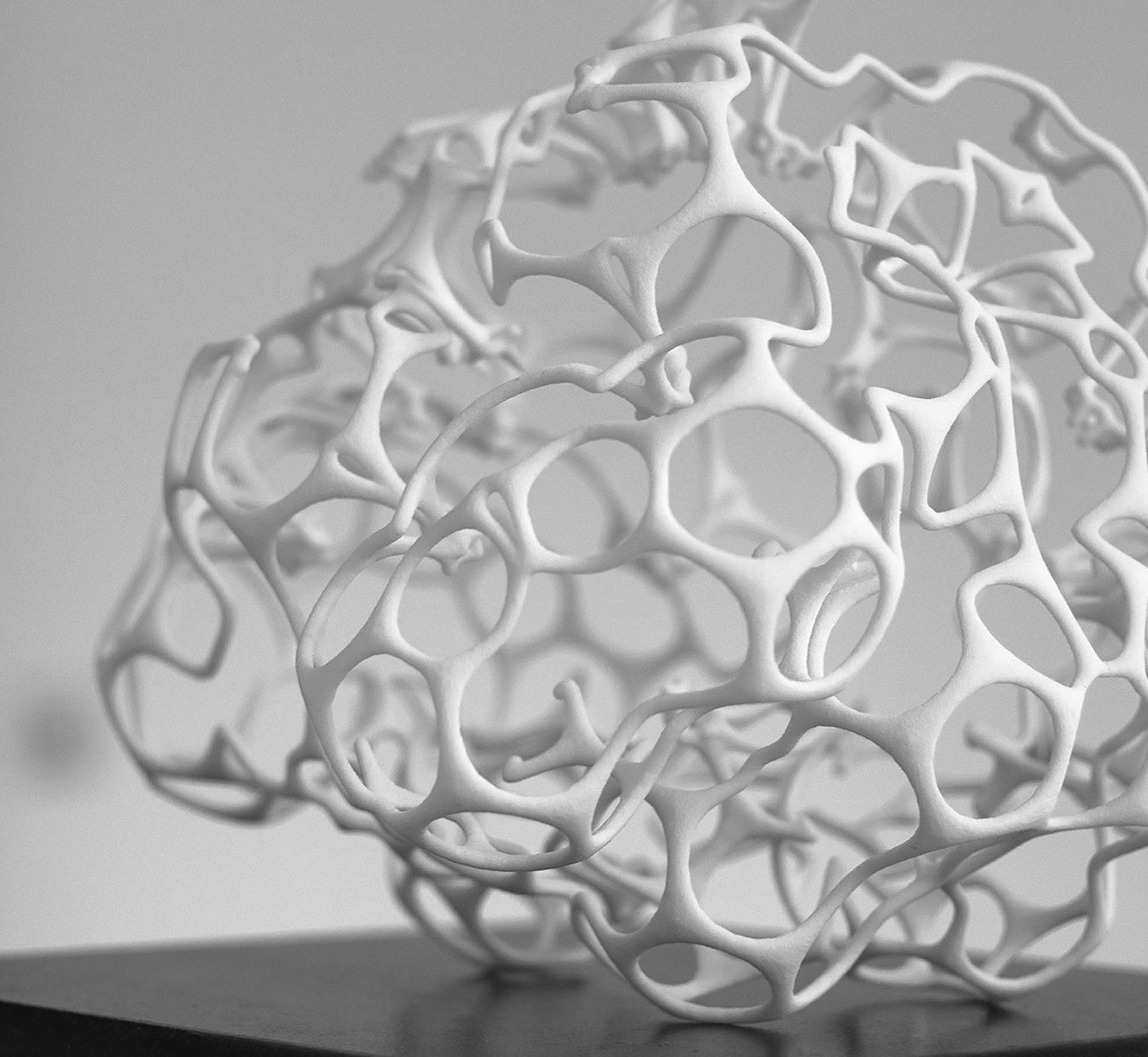
This week’s selection is the complex 3D printed “SimpSymm” series by Christoph Bader and Dominik Kolb of Deskriptiv.
The collection is composed of many complex geometric shapes, all generated by sophisticated software.
The two designers, Bader and Kolb, are recent graduates of he Mediated Matter Group at the MIT Media Lab, which is well known for its work in generative design for 3D printing. They explain their philosophy:
Processes that produce shapes are a central theme of our work. To us, this is a switch from a product oriented thinking to a process oriented way of working. This is often called procedural- or generative-art. As generative artists we are no longer just concerned about one particular outcome or the final artifact, rather we are focusing on the process that generates the final results. Designing such processes is a key part of our work.
Generated designs can be highly complex and entirely impossible to design manually, so software is a must. The Deskriptiv team employs a powerful tool to do so. Essentially, a base 3D model is modified by iteration through multiple generations according to the algorithm to arrive at a final complex design. This process is shown in their video:
Items in the collection are quite varied in design, and serve no purpose other than being able to admire the majesty of their complexity.

Some are quite airy,

While others are more robust.
They explain the background of the SimpSymm project:
SimpSymm is a generative art project that explores the interplay between the digital and the physical sculpture. The heart of this project is our generative/procedural algorithm that creates an infinite variety of aesthetical, digital sculptures that are especially designed for the production with 3D printing. The algorithm is encapsulated in an App with an interface that gives an audience direct controle over the algorithm´s parameters.
The audience changes parameters and the algorithm responds to that by adapting the shape of the sculpture that it is currently creating. This results in an dialog between the user and the software: Parameter changes lead to shape changes that are evaulated by the user whereupon new parameter changes follow, that result in new shape changes until a pleasant artifact is found. The artifact is then brought to life via 3D printing.
While the aesthetic shapes of SimpSymm may be mere artwork, the technology behind them can no doubt be adapted to produce functional shapes as well, and indeed some of Deskriptiv’s other projects have already done so.
Via Deskriptiv

